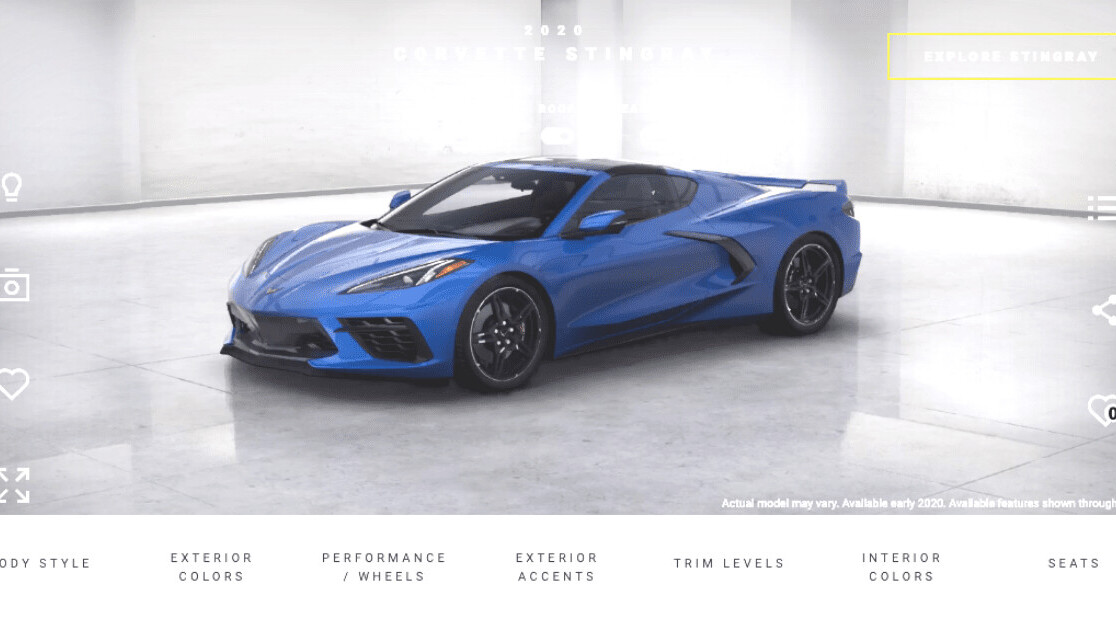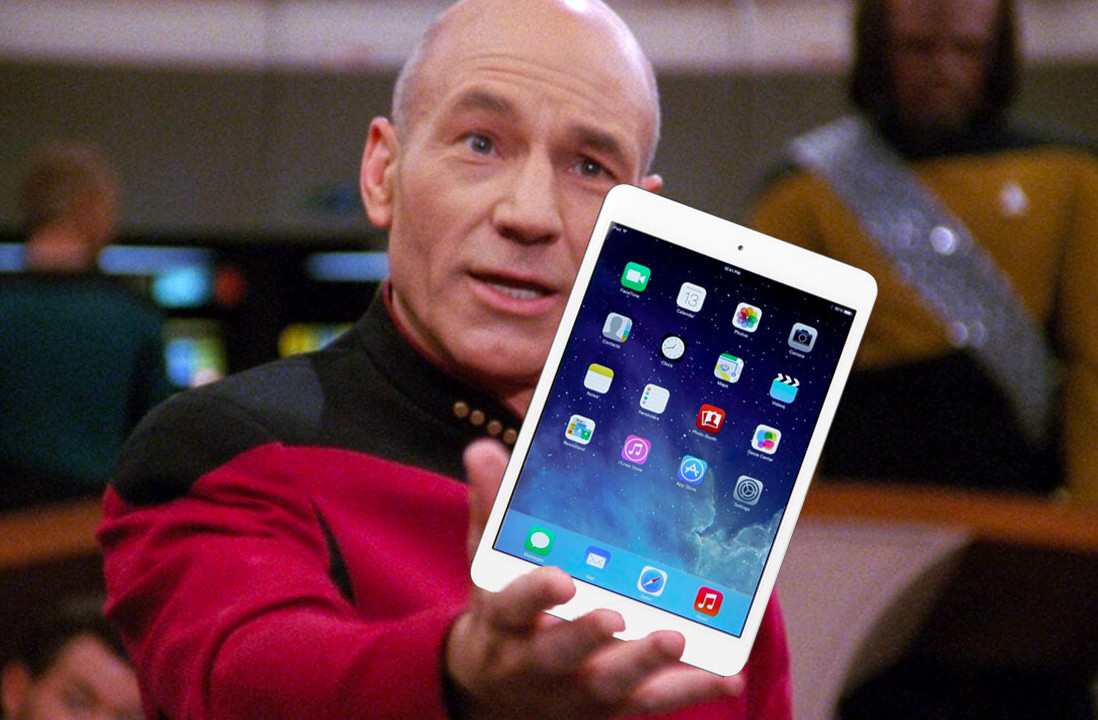Chevrolet ignited buzz in July when it unveiled the C8 Corvette — so much buzz that the livestream slowed to a crawl. The C8 wasn’t the only thing that drew a crowd, though. The new 2020 Corvette Visualizer, a 3D configurator, attracted so many users on reveal day that it crippled Chevrolet’s website.
In just two weeks, more than 940,000 virtual Corvettes were built with the photo-realistic 3D tool that lets customers view the car from the top, bottom, and inside while choosing the car’s colors, wheel type, exterior accents, and more.
Sure, it’d be easy to write this off as little more than a gimmick. But in reality, Chevrolet has tapped into what the future of buying will look like. I fully believe the future of shopping is 3D.
Tapping into what modern consumers want
Consumers want a curated, guided buying process that will match them with something that fits their needs, style, and tastes — all while providing them with the information they need about cost, performance, and utility. They want to know what a product will actually look like before committing to a purchase.
Real-time 3D turns shopping into a gaming experience as consumers custom-design their own products using photo-real interactive models within immersive environments.
Under Armour’s ICON shoe configurator is another great example of a 3D configurator that puts customers in the designer’s seat — but this one lets buyers fully design their next pair of sneakers. Starting with a blank canvas, customers can customize everything, including the color or pattern of the soles, the laces, the stitching, and even the inside of the shoe. It’s easy to see how a person could lose half an hour (or even half a day) exploring all the options.
Consumers are spending more time interacting with brands that offer immersive 3D environments to play in. In fact, users of one 3D configurator from a Polish geodesic dome manufacturer spent 30-40 minutes, on average, constructing their dome tents.
Creating an ultra-realistic, 3D digital model that allows a user to configure an item to his or her specifications isn’t just engaging, though — it’s empowering. And it’s something many consumers have grown accustomed to doing.
The first step in many video games is to create a custom avatar. And once you’ve spent time creating your player, you’re invested. In games like Minecraft, you go even deeper and build entire worlds. An intuitive next step is to take this concept further and look at the impact that configuring luxury products, which you can then turn into reality, would have on the buyer’s journey.
The ability to develop real-time 3D configurators with popular game engines like Unity or Epic Games’ Unreal Engine has never been more accessible for enterprise. Gaming technology and 3D rendering tools enable ecommerce businesses to implement a more interactive buyer experience without the need for brick-and-mortar stores or for buyers to even leave their homes.
From a graphics standpoint, the level of ultra-real, high-fidelity models that customers can interact with are similar to the experience of a modern video game. Consumers can not only configure their next home or dream car, but they can also fully visualize the experience of enjoying them in immersive environments. For example, car buyers could pop the hood of their newly designed vehicle and actually hear the engine roar.
Further social interaction and gamification are also in play, like sharing your digital car on Instagram or receiving a personalized video brochure based on your creation — similar to the types of rewards and leaderboards that inspire gamers to keep coming back.
Highly immersive, interactive experiences will expand as manufacturers see their potential for an impressive return on investment. As video games become more prevalent and accessible on any device thanks to cloud gaming technology like Google Stadia, consumer demand will grow for more interactive 3D buying experiences. The possibilities are tremendous.
Creating successful user experiences
While 3D configurators are poised to create exciting changes in the way we buy, it won’t matter how impressive the technology is if it’s unreliable. Just look at Chevy’s Visualizer: even though it was an exciting, engaging way for customers to engage with the brand and design their dream car, the high traffic slowed the system on launch day, which led to some disappointing user experiences.
Buyers expect to access 3D configurators from any device while online, without needing to download anything or put on a bulky virtual reality headset. They expect a stable, high-performing stream without any hiccups or lag time — all delivered in high-fidelity, photo-realistic models. This can be a lot to deliver when dealing with data-heavy, graphic-intensive 3D applications and high traffic.
Ease of use is also key when customers are ready to buy. They want the option to speak with a sales representative (or design expert) online as they’re configuring their 3D asset in real time. And once they’ve finished creating their customized product, they want to have easy access to information like the address of the nearest store or dealer.
We’re still in the early stages of what’s possible with interactive 3D streaming. Industries like automotive, manufacturing, fashion, and architecture are leading the way.
Moreover, 3D interactive streaming will require a lot of education on the part of those who want to use it in their marketing plans. The technology is complex and can be difficult to set up to ensure an optimal user experience. The cost of implementing this technology can be prohibitive for some, and brands using 3D configurators will need to answer questions concerning scalability. But if the popularity of Chevy’s 3D configurator is any indication, the results speak for themselves.
Interactive 3D experiences will become increasingly prevalent as buyers incorporate their love of gaming with shopping. The online retail experience must be more than simply convenient; it should also be personal for customers and wow them in new and compelling ways. Brands that don’t deliver immersive online experiences will get left behind.
Get the TNW newsletter
Get the most important tech news in your inbox each week.





